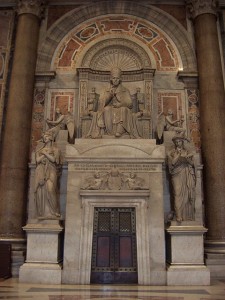
The second thing that struck me about Rome was death. Tombs, funerary monuments, dead bodies (corrupt and incorrupt), instruments of torture, catacombs, etc. I felt such gravity.
As I reflected on this, I realized something that I had known rationally before but perhaps not spiritually, that brutal murders, decaying bones, and marble coffins aren’t an end but a doorway.
A few weeks before my trip, a priest at my parish had reminded us that each time we hear the Mass we recall that we live this life in view of the next:
Deliver us, Lord, from every evil,
and grant us peace in our day.
In your mercy keep us free from sin
and protect us from all anxiety
as we wait in joyful hope
for the coming of our Savior, Jesus Christ.
I guess I was experiencing some anxiety about seeing all these physically dead people, but once I realized that they were spiritually alive and well in Heaven, the whole experience took on a new meaning.
It became like making new friends! Like, “Hey St. Catherine of Siena, how’s it going?” Or “Wow St. Monica, is that really you?” It was very moving saying “Thank you, St. Josémaria Escriva” as I was kneeling before his tomb.
My journey from the darkness of death to the hope of eternity with our Savior was yet another spiritual fruit of my trip to Rome. I’m sure other fruits will emerge, but I’m very grateful for the two I’ve written about here!

I know some people would probably think it is strange to say this, but Ash Wednesday Mass is one of my favorites of the year. Hearing the words “thou art dust, and to dust thou shalt return,” is striking. But it is done in the context of the Eucharist which reminds us of the death AND resurrection of our Lord. Jesus passed from death to life, and we who are united to Him return to the dust only to be raised to Heaven with an incorruptible body at the end of all things.
Indeed, death is not an end, only a doorway.